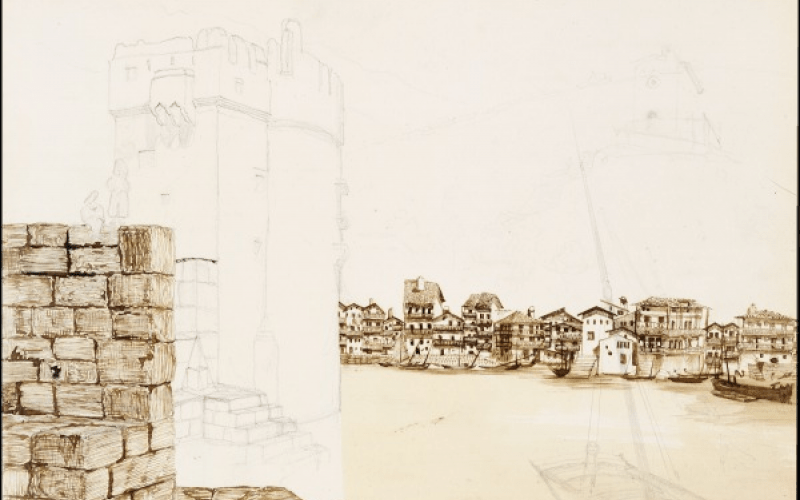
Pasajes. More than just a ride, a wonderful interlude, a voyage of discovery…
Published on 3 November 2017, In Event
"This humble tract of earth and water would be greatly admired if it were in Switzerland and famous if it were in Italy, but remains unknown because it is in Guipúzcoa…"
That is how Victor Hugo, who lived in Pasaia in 1843, described this unlikely narrow passage between Mounts Jaizkibel and Ulia, where an indentation forms the largest harbour on the whole Cantabrian coast.
Pasaia has obviously changed a great deal since then, and the port is now the most important in Guipúzcoa. Its warehouses, cranes, basins, and freighters do not exactly give the impression of a tourist destination. Various districts around the harbour in Pasaia – San Pedro, Antxo, and Trinxerpe, on the San Sebastian side – bear witness to the town's working class and industrial traditions. However, on the extreme eastern side, on the banks of a narrow passage to the Atlantic, the old San Juan quarter is eminently worth a visit...
Coming from San Sebastian, and arriving in Pasaia from the San Pedro side, a shuttle boat crosses over to San Juan, like a rite of passage… Having escaped all wars and industrial revolutions, the village is out of time. The frontage of fishermen's houses with coloured terraces on piles is truly beautiful. Down a narrow street with wooden and stone houses painted in bright Basque (red and green) and marine colours backing onto the mountain, there is a building devoted to scale models of old sailing ships with a commemorative plate on the wall. Marquis de Lafayette left from here to sail across the ocean to help the American insurgents win their Revolutionary War... Victor Hugo's house, with his bedroom, furniture and a few autographs is located nearby.
These are magical places where time stands still, as it does in the Casa Camara, that marvellous restaurant with a slightly faded charm, whose famous dining room terrace juts out onto the water. A large tank of seawater located in the middle of tables, crates, rigging, and pulleys keeps fish and shellfish as fresh as can be before they are served to customers.
A little further away, on the other bank, a 16th century work site can be visited. This is where the San Juan whaling ship, whose wreck was found off the coast of Newfoundland, is being reconstructed with materials and techniques used at the time. This is a way of paying homage to Basque naval history and industrial traditions.
The coastal road from Hondarribia to Pasaia rises as far as Mount Jaizkibel, by way of the Hermitage of the Virgin of Guadalupe, who has watched over the town for centuries. You can see pottok ponies and admire breathtaking views of the ocean on the way. The road from San Juan to Pasaia descends abruptly.
This is more than just a ride. It is a wonderful interlude, a voyage of discovery…




